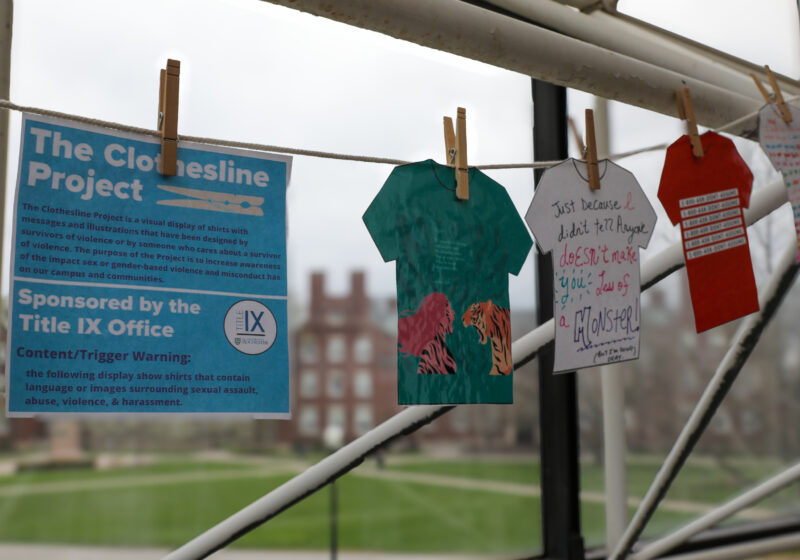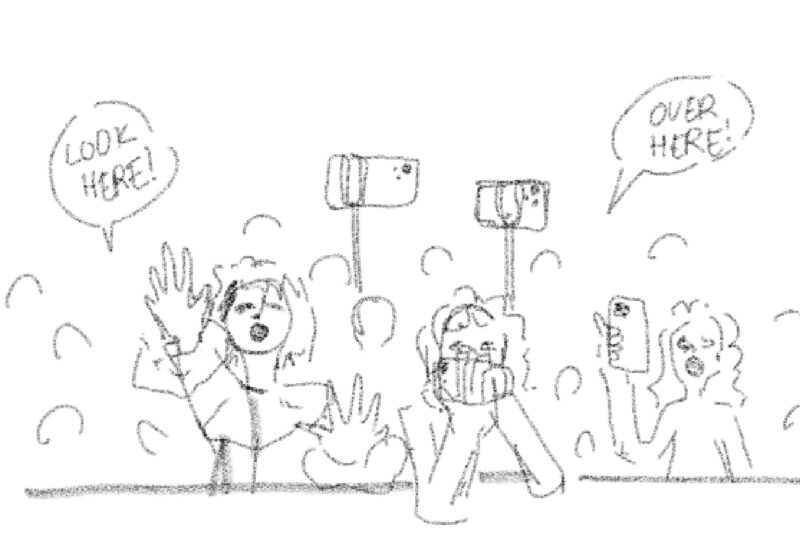Living in the musical moment is the best motivator for me as a musician. It allows absolute freedom to express who I am and what is important to me. Similarly, the intent of the third annual “HeART of Disorder” exhibit, an award-winning art exposition sponsored by Active Minds, was to showcase a range of student artwork that was inspired by internal struggles faced by students on a regular basis, including anxiety, depression, unrealistic body image and various other mental maladies. It was a celebration of overcoming mental illness stigma in a very personal and creative way, involving paintings, poems and live performances involving music and interpretive dance routines.
The exhibit featured powerful examples of the subtle yet profound effects of the written word in poetry by Hannah Ephraim. One of her pieces emphasized the importance of having social support in trying to cope with the effects of depression. She described her inspiration from her mentor, Dr. Joseph Coulson, as “this voice echoes/around the walls/in which I write, inclining me/toward/my own gold stars.” Her work was insightful and made a very important point about fighting against isolation when seemingly trapped by a mental illness, a theme that reoccurred in other pieces.
A poetic narrative after a suicide attempt was described with an impeccable rhyme scheme in Anaclare Sullivan’s work, “Mustard Seed Heart.” This featured a patient who had attempted suicide in the hospital, and the mental trajectory that she followed to convince herself that life is worth living. Sullivan described the creation of the work as “my journal from suicidal depression to recovery and it offered me an emotional release.” The poem was beautifully crafted, and although the bulk of it involved contemplating the end of life, it offered a solution: “Please wake up tomorrow /We all have so much to give/so listen to the echoes of your heart/because it’s telling you to live.”
Visual interpretations of struggles with mental illness struggles included a photograph by Amy Scarpelli, showing a girl in a bright pink dress attempting to get around a wall made of plastic wrap. This depiction emphasized the weakness of the self-constructed barrier that separates people with social anxiety from others in a very clever way.
“Anxiety doesn’t stop you from seeing the possibility of interaction, just an irrational stopping point,” Scarpelli said.
Similarly, Marcelina Marknek’s black and white photograph, “Demons,” showed a smiling, seemingly content girl. Yet in the background were several other images of the girl, revealing expressions of anguish and pain. Marknek cleverly demonstrated how often the effects of mental illness are forced to be trapped inside a person, and ultimately how this can do more harm than good.
Live performances ranged from SeQuoia Kemp’s delivery of poetry dedicated to her grandmother. This offered a very touching experience with which I was able to connect. As Kemp described the loving relationship she had had with her own grandmother, I was reminded of my own relationship with my Grandma and how I can still fondly remember her despite the boundaries of death. In contrast, there was an uplifting improv performance by NJR Latin Band, featuring an upbeat, Santana-like sound with solid guitar and percussion work. Vocal Point gave a powerful performance with a great blend. And the dance interpretations, featuring a performance by Sihir Belly Dance Ensemble, featured fluid, well-synchronized movements that seemed to gracefully demonstrate individuals dealing with their own personal burdens, yet able to come together in the conclusion of the dance.
Overall, the expo showcased an excellent array of artwork that not only aimed to emphasize the triumph of overcoming mental illness and the stigmas associated with it, but also was very effective in reminding others about the multiple outlets available for emotional relief. It truly embodied what the definition of art should be–a place of solace for unlimited expression that paves the way for unlimited growth as an artist and as a person.
Kibler is a member of the class of 2017.






